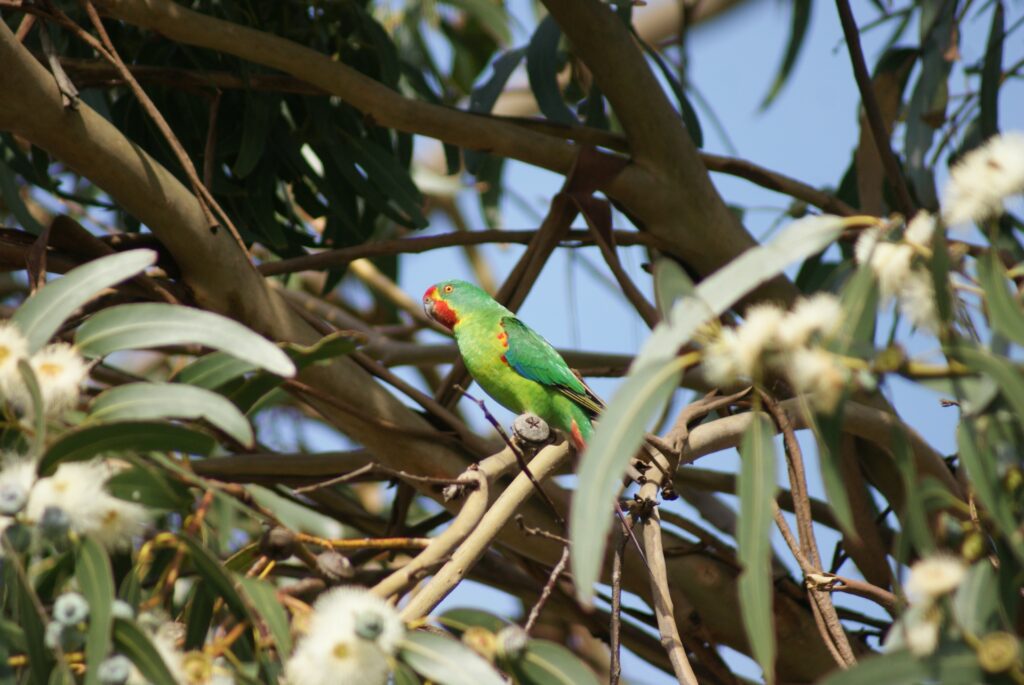Streaking through the air at speeds of up to 90 kilometres an hour, the brightly coloured and iconic Swift Parrot is one of only two parrots that annually migrate from mainland Australia to breed in Tasmania. Arriving in spring, they seek out flowering blue gums, find a mate and a suitable nest, and spend the summer raising chicks. However, habitat loss, competition for increasingly fewer nesting hollows and predation by introduced sugar gliders are all having a devastating impact on this critically endangered bird.
Through funding from the Australian Government’s National Landcare Program, NRM South has embarked on a project aimed at helping Swift Parrots establish a road to recovery – including using a system of conservation covenants to secure Swift Parrot habitat on private land.
One of the challenges for Swift Parrot conservation is knowing where they will nest. They choose nesting sites based on where their preferred food, nectar from Tasmanian blue gum flowers, is most abundant during that year – and this varies. ‘This means we have to be highly adaptive when implementing conservation actions,’ explained Maudie Brown, Senior Project Officer for NRM South’s Biodiversity Program.
‘To successfully breed, Swift Parrots need the right kind of nesting and food resources, so we’re working to protect areas of high-value Swift Parrot habitat on private land to increase their chances. This is a longer-term approach to protecting areas we know they need – if not this year, then maybe the next.’
Working with project partners, the Tasmanian Land Conservancy and the Department of Primary Industries, Parks, Water and Environment (DPIPWE), sites in Pelverata and Wielangta have now been surveyed and approved for covenants – representing 122 hectares of high-value habitat. These legally binding agreements will contribute pockets of ecologically valuable land to Australia’s National Reserve System.
Simon Roberts, a landholder who has signed on to the project, feels privileged to contribute to endangered species protection. ‘We feel a duty of care not only to the animals and plants on our properties but also to their future viability,’ said Simon. ‘We try to think globally and act locally by considering our property as part of the wider landscape through its potential contribution to the local, regional, state and federal ecological assets.’
‘The approval of these two covenants is a great start and DPIPWE have provided valuable in-kind support for the project’, concluded Maudie. ‘It demonstrates that there are many ways of addressing conservation issues, and that community can be involved in these solutions, boosting efforts across our landscapes.’
-Ends-
Image credit: John Tongue
